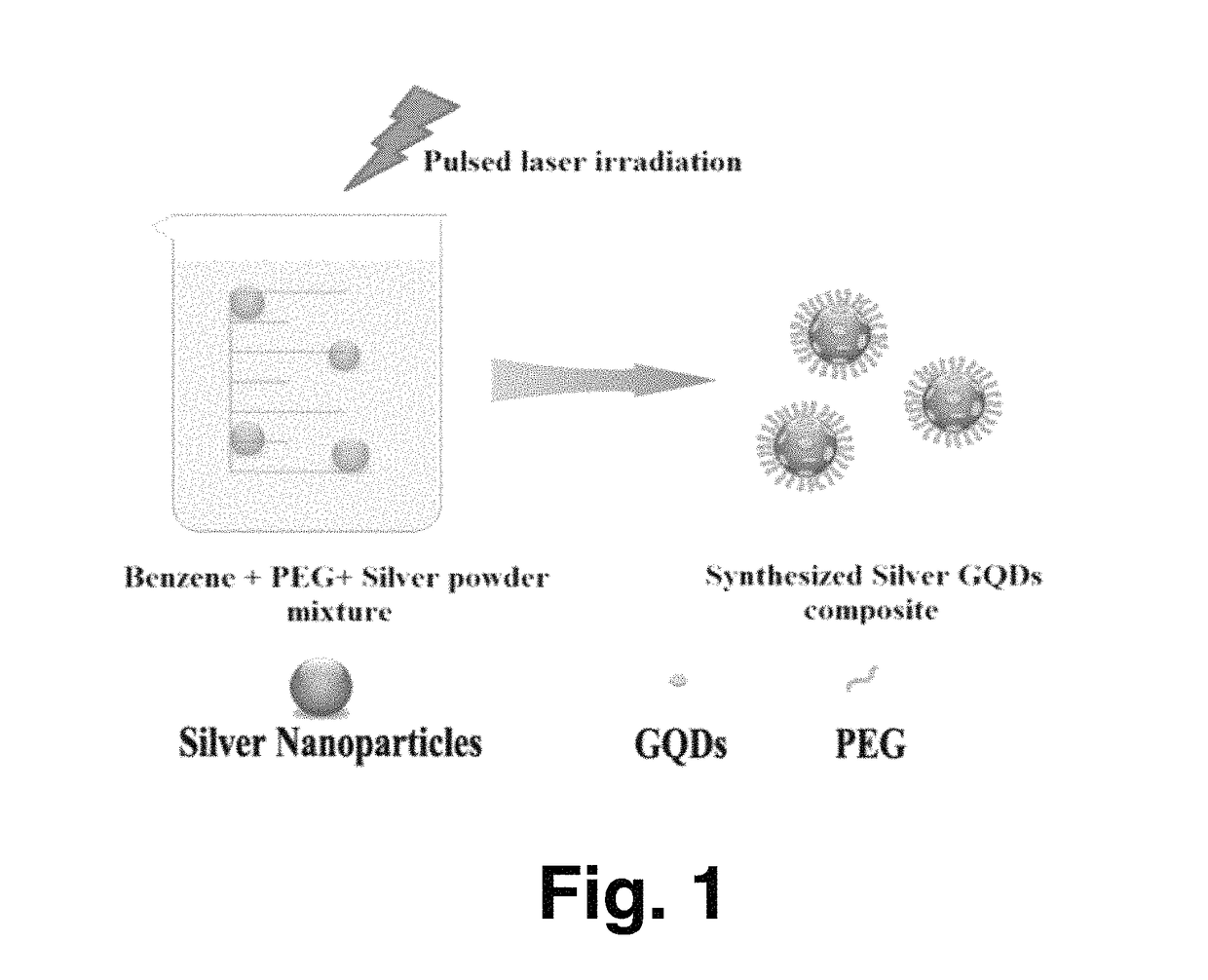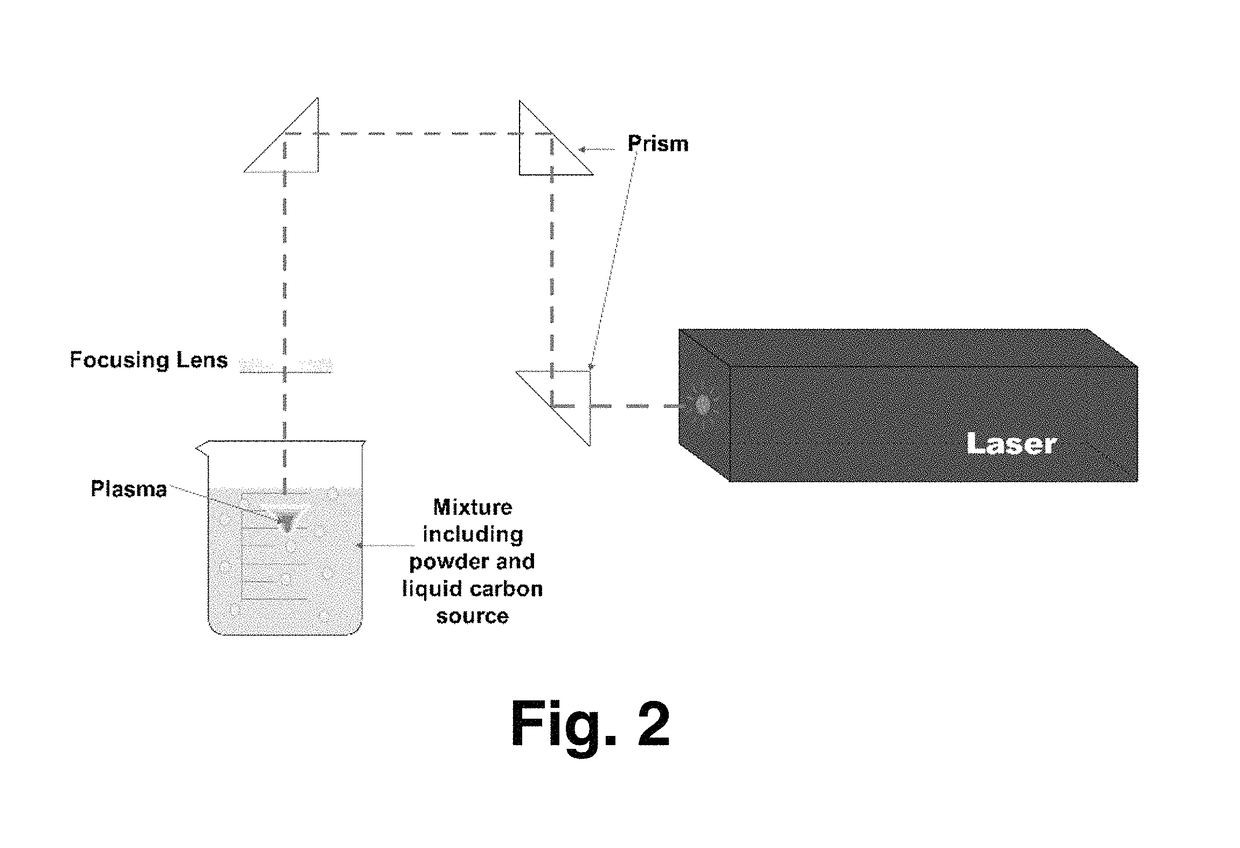Antibacterial activity of silver-graphene quantum dots nanocomposites against gram-positive and gram-negative bacteria
a quantum dots and nano-compositivity technology, applied in chemical/physical/physical-chemical processes, chemical apparatus and processes, energy-based chemical/physical/physical-chemical processes, etc., can solve the problems of multidrug-resistant strains, silver has shown high levels of toxicity at adequate concentrations, and antibiotics failed to inhibit all types of bacteria. , to achieve the effect of minimizing toxicities and enhancing antibacterial activity of silver
- Summary
- Abstract
- Description
- Claims
- Application Information
AI Technical Summary
Benefits of technology
Problems solved by technology
Method used
Image
Examples
Embodiment Construction
Synthesis of the Bare GQDs and Ag-GQDs
[0029]Bare GQDs were functionalized with polyethylene glycol (PEG) as follows. A 0.25 wt % mixture of nickel oxide powder (Alfa Aesar) and 1.25 wt % of PEG bis (3-aminopropyl) terminated (Sigma Aldrich) in 98.5 wt % benzene (Sigma Aldrich) was irradiated for 45 minutes with a 1064 nm pulsed Nd:YAG laser (Continuum Surelite II, KDP doubling crystal, 10 Hz, 10 ns pulse width). The synthesized GQDs were separated from benzene and the precipitated nickel oxide by centrifugation at 10000 rpm, following dissolution in nano-pure water. Finally, the GQDs solution was purified by using dialysis bags.
[0030]For synthesis of Ag-GQDs, a mixture of 0.25 wt % of silver powder (Sigma Aldrich) and 1.25 wt % of PEG bis(3-aminopropyl) terminated (Sigma Aldrich) in 98.5 wt % benzene (Sigma Aldrich) was prepared and irradiated by pulsed laser, similar to the synthesis of bare GQDs as illustrated in FIG. 1. The synthesized Ag-GQDs nanoparticles were separated from be...
PUM
 Login to View More
Login to View More Abstract
Description
Claims
Application Information
 Login to View More
Login to View More - R&D
- Intellectual Property
- Life Sciences
- Materials
- Tech Scout
- Unparalleled Data Quality
- Higher Quality Content
- 60% Fewer Hallucinations
Browse by: Latest US Patents, China's latest patents, Technical Efficacy Thesaurus, Application Domain, Technology Topic, Popular Technical Reports.
© 2025 PatSnap. All rights reserved.Legal|Privacy policy|Modern Slavery Act Transparency Statement|Sitemap|About US| Contact US: help@patsnap.com



